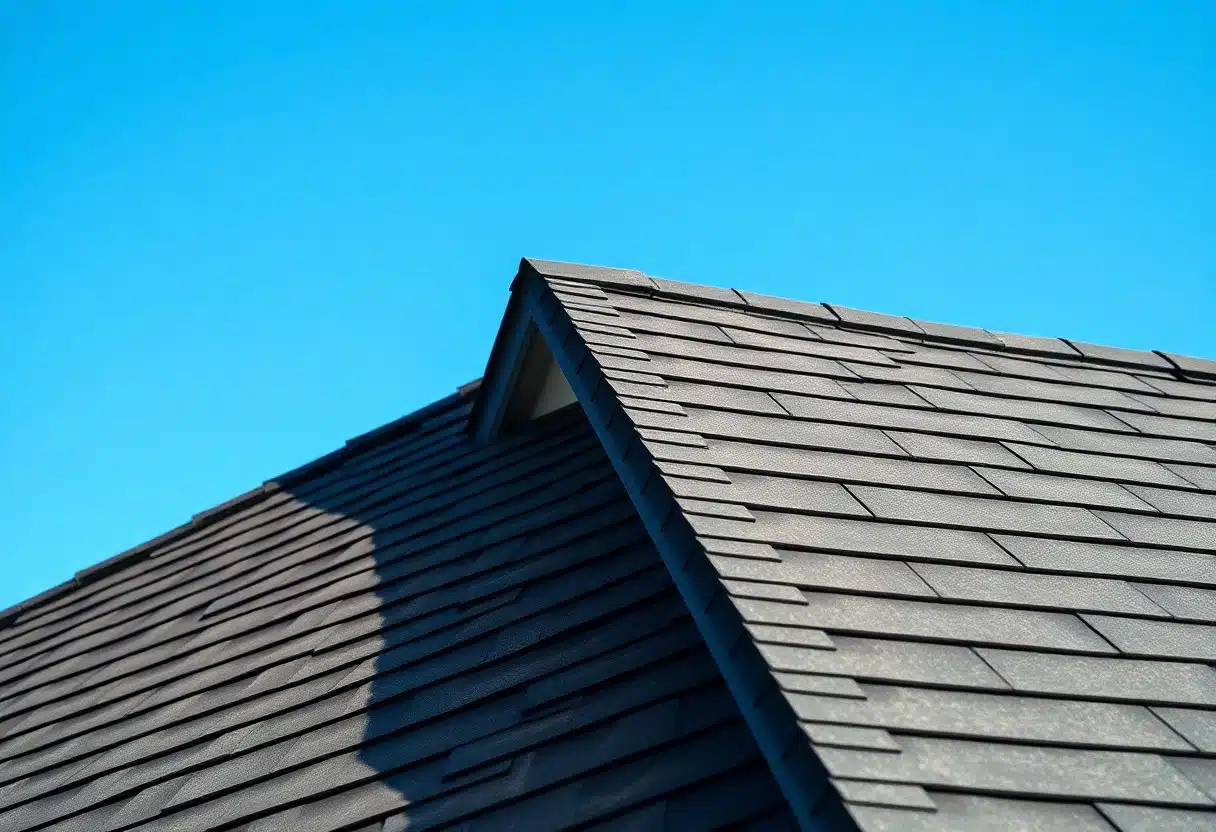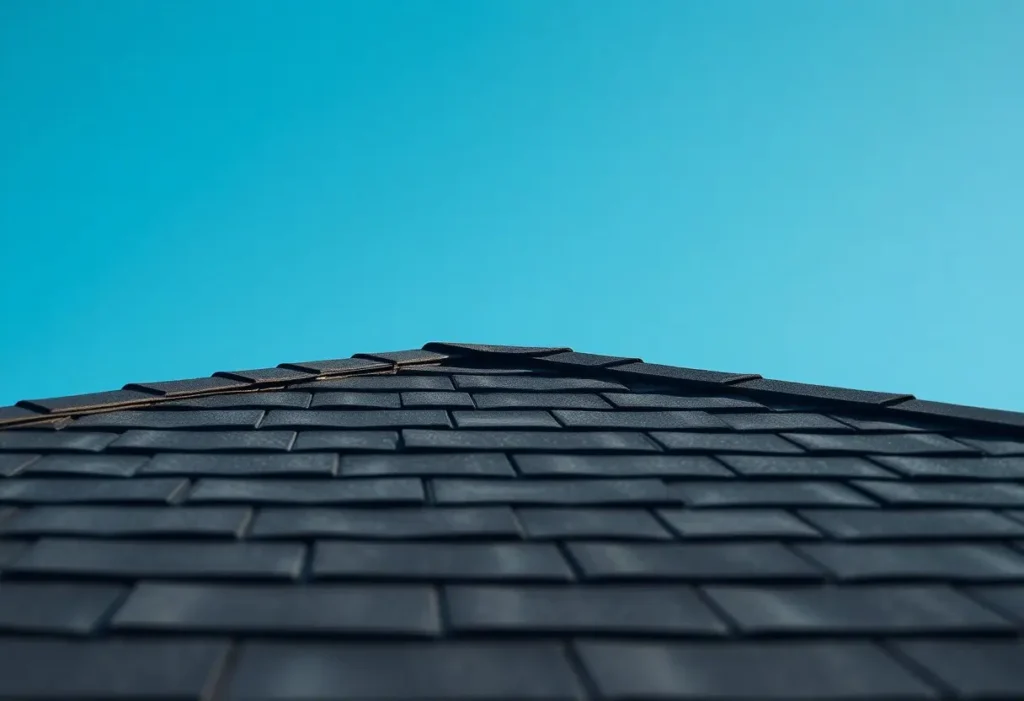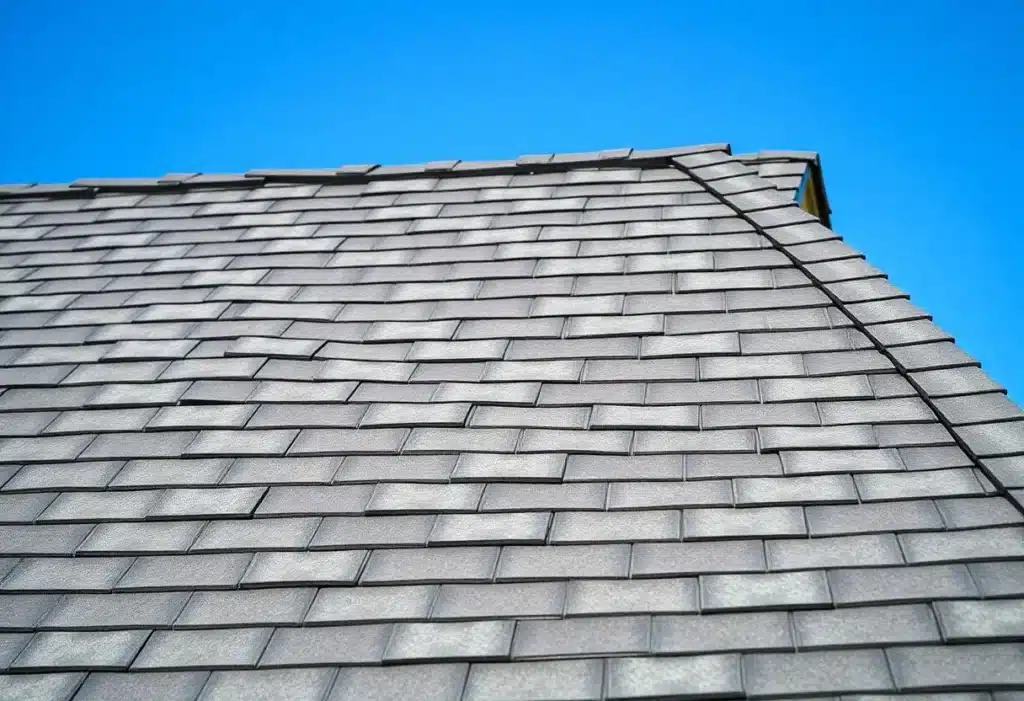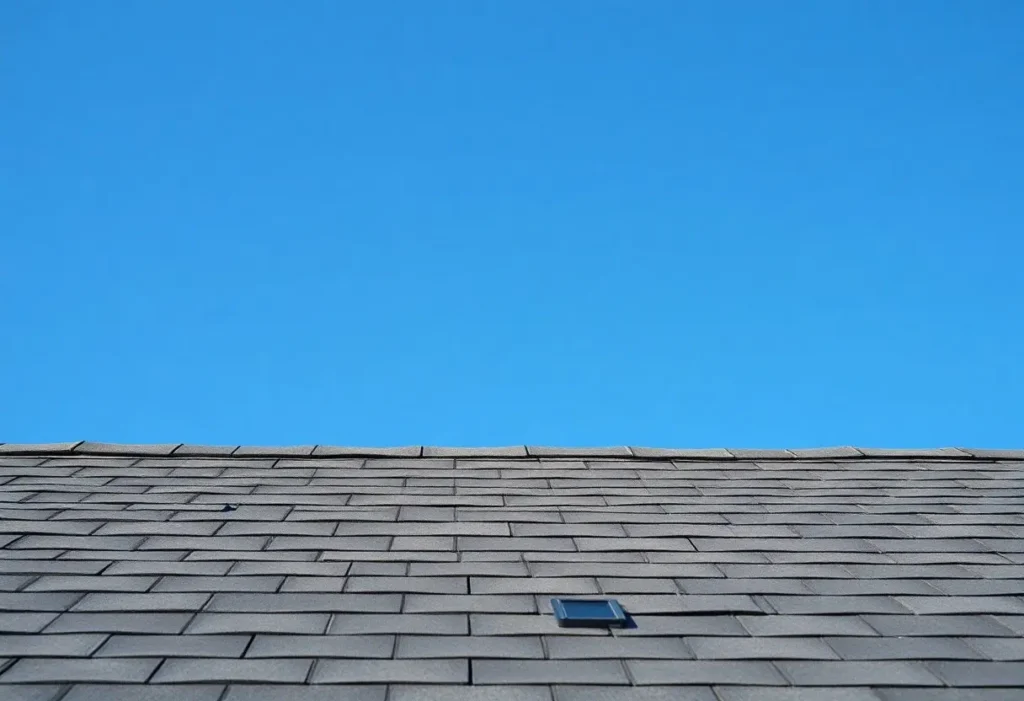How Long Do Asphalt Shingle Roofs Last? Essential Insights

Ever wondered how long do asphalt shingle roofs last? It’s crucial to understand the lifespan of your asphalt shingle roof, as this can significantly impact your home’s value and your finances. Typically, asphalt roofs last 15 to 30 years, depending on various factors such as climate, installation quality, and maintenance routines. Neglecting these factors can lead to potential leaks and costly repairs. By staying informed about the expected lifespan and proper care of your roof, you can ensure it provides reliable protection for your home for many years to come.
Key Takeaways:
- Asphalt shingle roofs typically last between 15 to 30 years, depending on the quality of the materials and local climate conditions.
- Factors such as proper installation, maintenance practices, and exposure to extreme weather can significantly influence the lifespan of an asphalt shingle roof.
- Regular inspections and timely repairs can help extend the roof’s life, preventing small issues from turning into major problems.
- There are different types of asphalt shingles, including three-tab and architectural shingles, with architectural shingles generally offering longer durability.
- Choosing high-quality shingles and ensuring proper ventilation in the attic can contribute to increased longevity and performance of the roofing system.
Longevity Factors That Determine How Long Do Asphalt Shingle Roofs Last
Several factors contribute significantly to the lifespan of your asphalt shingle roof. Understanding these influences can help you maximize your roof’s durability and performance. The primary aspects to consider include:
- Material quality of the shingles used
- Climate conditions in your geographical area
- Installation methods utilized
- Maintenance practices adopted over time
Heating, cooling, weather patterns, and maintenance practices play a pivotal role in determining how long your roof will perform. Perceiving the interplay of these factors enables you to make informed decisions regarding repairs and replacements.
Material Quality and Shingle Composition
The quality of the materials and the composition of your asphalt shingles are vital components in their overall durability. Higher-grade shingles, often referred to as architectural or dimensional shingles, typically feature multiple layers that provide increased strength and longevity. These shingles can last up to 30 years or more, while lower-quality three-tab shingles may only offer a lifespan of about 20 years or less.
When purchasing your shingles, scrutinizing their manufacturer’s warranty can provide additional insights into the expected durability and performance. Your choice of manufacturer can also impact longevity significantly. Well-known brands often utilize optimized techniques and superior materials to enhance shingle resilience against factors like UV exposure, temperature extremes, and physical damage.
Choosing a reputable manufacturer assures you of your investment, as many high-quality products come with a lifetime warranty, covering defects in material for extended periods.
Climate Influence on Roofing Durability
The climate in your area directly affects the lifespan of your asphalt shingles. Regions with extreme temperature fluctuations, intense sunlight, or heavy precipitation can accelerate wear and tear. For instance, areas prone to heavy rainfall or snow can lead to increased moisture penetration, resulting in mold and mildew, which can compromise shingle integrity.
Conversely, extremely high temperatures can cause shingles to become brittle and crack. Additionally, wind can be a significant factor in shingle longevity. Higher wind speeds can dislodge shingles from their positions, exposing the underlayment and decking to possible damage. If you live in a windy region, selecting high-wind-rated shingles will be advantageous, as they are designed to hold up better against harsh weather conditions.
Moreover, regular inspections and maintenance are imperative to ensure your roof remains protective regardless of the climate challenges in your area.
Maintenance Practices That Extend Roof Life
The Role of Regular Inspections and Repairs
Regular inspections play a vital role in maintaining your asphalt shingle roof. Each season invites the potential for wear and tear from environmental factors such as heavy rainfall, snow accumulation, or extreme heat. By performing inspections at least twice a year, you can proactively identify issues such as missing shingles, granule loss, or signs of water damage, which can escalate if left unaddressed.
For instance, homeowners who conduct thorough checks are often able to spot minor leaks that could develop into substantial problems, leading to costly water damage to their home’s interior.
Addressing repairs promptly can also prevent further deterioration of your roof. Even small issues can create a domino effect, exacerbating damage to other components of the roof or underlying structures. Many homeowners find themselves facing larger repair bills simply due to ignoring a single cracked shingle. Taking the time to fix these small problems can extend the life of your roof, saving you both time and money in the long run.
Importance of Proper Ventilation and Drainage
Effective ventilation and drainage systems are necessary for prolonging the lifespan of your asphalt shingle roof. Without adequate ventilation, heat and moisture can become trapped in the attic space, leading to premature aging of shingles and an increased risk of mold growth.
An improperly ventilated roof may experience temperature fluctuations that can create ice dams—this is particularly relevant in colder climates. To prevent these issues, ensure that your roof is equipped with both intake and exhaust vents, which facilitate proper airflow, thus regulating temperature and humidity levels.
Additionally, a well-thought-out drainage system helps direct water away from your roof, preventing potential leaks and water pooling that can damage your shingles over time. Install gutters and downspouts that efficiently guide rainwater away from the roof’s edge. Keep these systems clear of debris to maintain optimal function.
Regularly checking for clogs in gutters and ensuring that spouts direct water at least five feet away from your home’s foundation will prevent unnecessary water exposure to your roof. This not only reinforces the longevity of your asphalt shingles but also protects the structural integrity of your home.

The Cost-Benefit Analysis of Roof Replacement
Before deciding to replace your asphalt shingle roof, it’s important to conduct a thorough cost-benefit analysis. While the initial investment might seem daunting—typically ranging between $5,000 and $10,000 for an average home—the long-term savings can make this expenditure worthwhile.
You can save a significant amount on energy bills; new shingles often come with improved energy efficiency, meaning you may spend less on heating and cooling your home. Furthermore, avoiding costly repairs from leaks or damage associated with an aging roof can lead to substantial financial savings over time.
Calculating Long-Term Savings Versus Initial Investment
Calculating the long-term savings associated with roof replacement involves analyzing potential repair costs against the lifespan of a new roof. If your existing shingles are nearing the end of their life expectancy, the likelihood of experiencing problems such as leaks increases, often resulting in expensive water damage repairs.
In contrast, a brand-new asphalt shingle roof could provide 20 to 30 years of reliable service, creating a balance between the cost of the new roof and the avoidance of future repair expenses. A simple spreadsheet detailing projected repair costs versus new installation costs can offer clarity on the overall financial picture.
Assessing Property Value Implications
Upgrading your roof not only protects your home but can also enhance its market value significantly. Real estate professionals often indicate that a new roof can increase your property’s value by as much as 15% or more. Buyers tend to prefer homes with well-maintained roofs, viewing them as less risky, leading to a quicker sale at a potentially higher price. This is particularly relevant in competitive housing markets where features like a new roof can distinguish your property from others.
Investing in a new asphalt shingle roof enhances both the aesthetic and functional aspects of your home, which can be particularly appealing to prospective buyers. Access to financing options or tax incentives in some regions may further alleviate the initial financial burden, making it easier to replace your roof while reaping the benefits of increased property value.
Investing upfront in a new roof could pay off handsomely, not just in the immediate term but well into the future as you maintain the integrity and appeal of your property in the real estate market.
When to Consider Replacement Over Repairs
Recognizing Signs of Significant Wear and Damage
Signs of significant wear and damage provide key indicators that it might be time to consider roof replacement rather than continuing with repairs. Look for missing shingles or those that are cracked, curled, or blistered. If you notice asphalt granules in your gutters or downspouts, this can signal that your shingles are deteriorating.
An increase in leaks, especially during rainstorms, highlights potential underlying problems that could be more severe than simple repairs can resolve. If your roof is approaching the end of its expected lifespan—typically around 20 to 25 years for asphalt shingles—/> you should evaluate its condition closely.
Another major factor to consider is the presence of moss or algae growth, which can trap moisture and lead to rot, weakening your roof structure. The interior of your home may also reflect issues through water stains on ceilings or walls, indicating that water is penetrating through the roof. Any signs of sagging or dips in your roof can signal structural problems, often requiring a complete replacement rather than a quick fix.
Evaluating Roof Performance in Extreme Weather
Extreme weather conditions can rapidly accelerate the deterioration of your asphalt shingle roof. Heavy winds can dislodge shingles, while hail can leave dents and cracks that compromise the roofing material’s integrity.
In regions prone to severe weather events, evaluating how your roof performed during storms is crucial. If your roof has been damaged by weather multiple times, frequent repairs may not be sufficient to maintain its integrity over time. Strikingly, studies indicate that roofs subjected to significant hail damage could see a lifespan reduction of up to 50% depending on the material’s resilience.
Assessing your roof’s resilience to conditions such as heavy rain or snow accumulation is equally important. The presence of ice dams can cause significant water backup, leading to leaks and additional interior damage. If your roof has been challenged by two or more major storms in a year, analyze whether the repairs from past incidents are holding up, as frequent repairs might indicate that a full replacement is a more viable long-term solution.

Technological Advances in Roofing Materials
Innovations in Asphalt Shingle Design
Your asphalt shingle roof’s performance and lifespan have been significantly enhanced by advancements in manufacturing techniques and material compositions. Modern asphalt shingles now incorporate improved granules that resist fading, algae growth, and weather damage. For instance, some brands utilize reflective pigments that lower roof temperatures, ultimately reducing energy costs during hot summer months.
Enhanced interlocking designs and self-adhesive backing have also revolutionized installation practices, contributing to stronger seals against wind uplift and leaks. These innovative features can extend the life of your roof to around 30 years or more, depending on maintenance and environmental conditions.
The Impact of Sustainability on Roof Longevity
As sustainability becomes a priority, the roofing industry is focusing on eco-friendly materials that not only minimize environmental impact but also ensure durability. Recycled components in asphalt shingles, for example, are now common, leading to both resource conservation and enhanced performance. Moreover, sustainable options such as cool roofs—those designed to reflect more sunlight and absorb less heat—can lower thermal stress on roofing materials, effectively increasing their lifespan. Embracing such technologies allows you to improve your home’s resilience while doing your part for the planet.
Research indicates that roofs constructed with sustainable materials can last up to 20% longer than traditional options. This longevity is attributed not only to the quality of materials but also to reduced thermal cycling, which typically leads to deterioration over time. By choosing sustainable shingles, you can positively impact maintenance costs and promote a healthier living environment, ultimately creating a benefit for both you and your home.
Frequently Asked Questions (FAQs) about Asphalt Shingle Roofs Lifespan
What is the average lifespan of asphalt shingle roofs?
Asphalt shingle roofs typically last between 15 to 30 years, depending on various factors such as the quality of shingles, installation methods, and maintenance practices. Higher quality shingles, like architectural shingles, may offer a longer lifespan compared to standard 3-tab shingles.
What factors can influence the longevity of an asphalt shingle roof?
Several factors can affect how long an asphalt shingle roof lasts. These include the quality of the shingles, the climate in your area (such as extreme temperatures or humidity), proper installation techniques, regular maintenance, and roof ventilation. Poor installation can lead to premature wear and damage.
How can I tell if my asphalt shingle roof needs to be replaced?
Signs that your asphalt shingle roof may need replacement include missing or curled shingles, significant granule loss (which may appear as dark patches on the roof), leaks or water stains in the attic or ceiling, and visible sagging. A professional inspection can also help assess the roof’s condition.
What maintenance can extend the life of asphalt shingle roofs?
Regular maintenance can enhance the lifespan of an asphalt shingle roof. This includes cleaning gutters to prevent water buildup, removing debris like branches or leaves, conducting annual inspections for signs of wear or damage, and ensuring proper ventilation to prevent heat and moisture buildup in the attic.
Are there any warranties available for asphalt shingle roofs?
Yes, many manufacturers of asphalt shingles offer warranties that can range from 20 years to lifetime coverage, depending on the product and manufacturer. It’s important to read the warranty details carefully, as some may have limitations or require proper installation by certified professionals to remain valid.

Currently, understanding the longevity of asphalt shingle roofs is crucial for any homeowner seeking to maintain the integrity of their property.
Typically, these roofs last between 15 to 30 years, depending on various factors, including the quality of the shingles, installation methods, and your local climate conditions. By investing in high-quality materials and ensuring proper installation, you can help maximize your roof’s lifespan. Regular inspections and maintenance will also play a significant role in extending the life of your roof, providing you with a safe and reliable shelter for years to come.
Additionally, your awareness of potential issues, such as weather damage or shingle deterioration, can significantly impact your roof’s performance. It’s advisable to stay informed about your specific roofing materials and to consult with professionals when necessary. This proactive approach not only protects your investment but also enhances the overall value of your property. Ultimately, by adopting good maintenance practices and being mindful of your roof’s condition, you can ensure that your asphalt shingle roof serves you well over its expected lifespan.
For a roof that truly stands the test of time against Winnipeg’s changing seasons, trust All Weather Exteriors. As a leading Winnipeg roofing company with a reputation for quality and customer satisfaction, we specialize in durable asphalt shingle installations and expert repairs. Protect your investment with a roof built to last.

Leave a Reply
You must be logged in to post a comment.